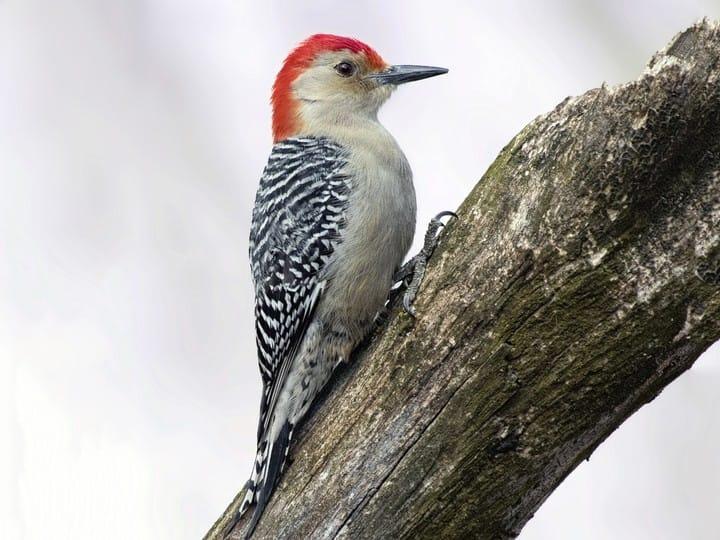Indigenous Woodpeckers in Florida: An Overview to Species and Behaviors
Indigenous Woodpeckers in Florida: An Overview to Species and Behaviors
Blog Article
Woodpeckers Unleashed: Checking Out the Wonders of These Proficient Tree Climbers
Woodpeckers, with their distinct markings and balanced drumming echoing via wooded locations, hold a special place in the avian world. Their specialized anatomy and adjustments enable them to browse upright surface areas with unparalleled ability. Their mastery of tree climbing is just one element of their interesting habits. As we explore the intricate details of woodpeckers' nesting routines, feeding methods, and the ongoing conservation initiatives to secure these remarkable birds, a much deeper recognition for their area in nature unfolds.
Makeup and Adaptations
When checking out the makeup and adaptations of woodpeckers, one can observe impressive functions that allow these birds to thrive in their specialized ecological niche. Woodpeckers are outfitted with a collection of distinct anatomical features that aid them in their woodpecking behavior. Among the most popular features is their solid, chisel-like beak, which is specialized for drilling into wood to uncover bugs or produce nesting cavities. This beak is sustained by solid neck muscle mass and a very developed head structure that functions as a shock absorber, enabling woodpeckers to repetitively eat trees without creating brain injury. In addition, woodpeckers have zygodactyl feet, with two toes facing onward and 2 facing backward, providing a company hold on tree trunks while they look for food or drum for interaction.
Additionally, woodpeckers have an one-of-a-kind tongue structure that is long, barbed, and sticky, enabling them to draw out bugs from holes in wood. This specialized adaptation allows woodpeckers to manipulate a food source that is hard to reach to lots of various other bird types. Generally, the makeup and adaptations of woodpeckers display the remarkable transformative options that have actually permitted these birds to grow in their arboreal environment.
Drumming Behavior
Having actually explored the makeup and adjustments of woodpeckers, the focus now shifts to comprehending their drumming actions, a distinct aspect of their interaction and territorial screens. Drumming is a crucial type of communication amongst woodpeckers, serving numerous purposes such as developing territories, drawing in companions, and signaling alarm. Each woodpecker varieties has an one-of-a-kind drumming pattern that aids individuals acknowledge members of their own varieties and distinguish them from competitors or killers.
Woodpeckers create drumming audios by quickly pecking on powerful surface areas such as dead trees, utility poles, and even metal objects, producing a collection of balanced beats. The intensity and rate of drumming can vary based upon the function; for example, a fast drumming series might represent aggressiveness towards burglars, while a slower and softer drumming pattern might show courtship (Woodpeckers click site in Florida). Additionally, woodpeckers may adjust the frequency and duration of their drumming to communicate specific messages effectively
Nesting Practices
Checking out the nesting practices of woodpeckers reveals interesting understandings into their reproductive actions and environment options. Woodpeckers are understood for their special nesting preferences, commonly excavating tooth cavities in trees to produce protected rooms for increasing their young. These cavities offer not only as a nesting website yet likewise as a safe sanctuary from additional info predators and stormy climate.
Woodpeckers display a high level of integrity to their nesting websites, usually returning to the same area time after time. This behavior highlights the value of appropriate habitat accessibility for their reproductive success. The selection of a nesting website is important for woodpeckers, with elements such as tree varieties, elevation, and degeneration stage playing substantial duties in their decision-making process.
Surprisingly, some woodpecker types are understood to excavate multiple tooth cavities within their territory, offering themselves with different nesting options. This strategy may work as a form of insurance versus possible risks or disturbances to their main nesting site.

Feeding Strategies
Woodpeckers utilize a variety of specialized feeding methods to obtain their key food resources. Among one of the most distinctive feeding actions of woodpeckers is drumming, which includes quick pecking on trees to uncover bugs beneath the bark. This drumming not just aids them find victim yet additionally works as a method of interaction with other woodpeckers. Woodpeckers have strong, chisel-like beaks that allow them to pierce right into wood easily. When a hole is created, they use their lengthy, barbed tongues to extract pests such as ants, beetles, larvae, and spiders. These tongues are coated with sticky saliva that aids catch the victim. Woodpeckers are also recognized to excavate tooth cavities in trees to accessibility covert insect larvae or sap. Some varieties, like the acorn woodpecker, store nuts in particularly produced view website holes called granaries. This tactical saving of food assists them survive throughout food shortage durations. Woodpeckers are absolutely exceptional in their feeding methods, showcasing versatility and intelligence in procuring their nourishment.
Preservation Efforts
In the middle of the detailed feeding strategies displayed by woodpeckers, the conservation efforts focused on protecting these remarkable birds play a critical role in maintaining their environments and populaces. Woodpeckers deal with numerous hazards to their survival, consisting of environment loss because of deforestation, environment adjustment modifying their ecosystems, and accidents with synthetic structures such as buildings and vehicles - Woodpeckers in Florida. Guardians are actively functioning to attend to these difficulties and make certain the long-lasting well-being of woodpecker species
)
Education and learning and public recognition projects are additionally crucial elements of woodpecker preservation initiatives. By elevating recognition about the significance of these birds in preserving healthy woodland ecosystems, preservationists can gather support for environment conservation campaigns and promote responsible land monitoring practices. With collective efforts between researchers, policymakers, and local neighborhoods, we can function together to secure a future where woodpeckers thrive in their natural environments.
Conclusion

Report this page